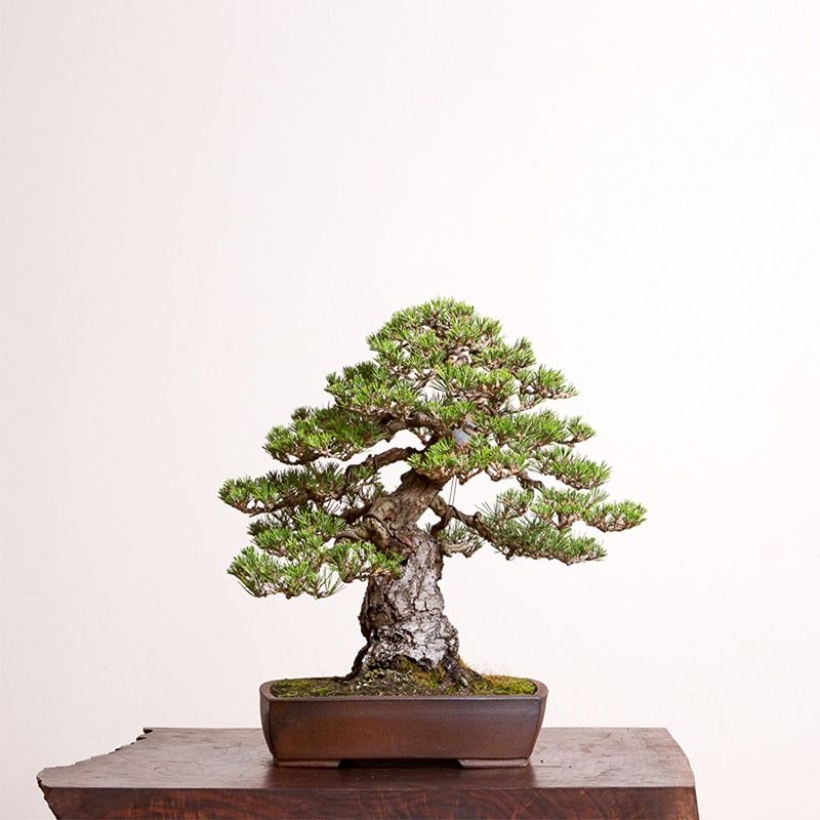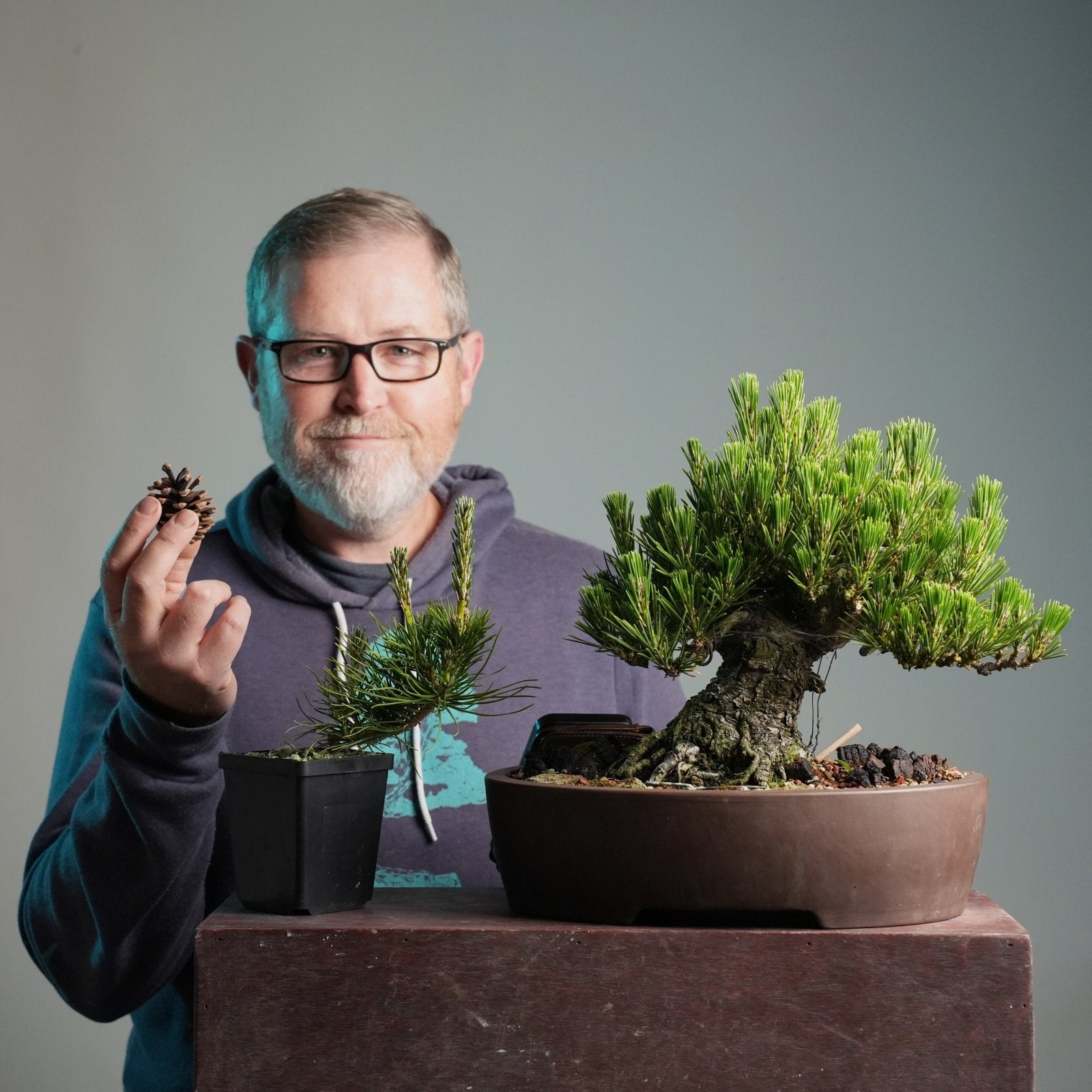Japanese Black Pine bonsai requires full sun and well-draining soil. Water regularly and prune to maintain shape.
Japanese Black Pine bonsai trees are revered for their striking beauty and resilience. These trees thrive in full sun, making them ideal for outdoor cultivation. Proper care involves regular watering, especially during the growing season, to keep the soil moist but not waterlogged.
Pruning is essential to maintain the desired shape and encourage healthy growth. This bonsai species prefers well-draining soil to prevent root rot and other issues. Fertilize during the growing season to provide essential nutrients. Repotting every two to three years helps refresh the soil and supports root health. With attentive care, a Japanese Black Pine bonsai can flourish and become a stunning centerpiece in any garden.

Credit: bonsaimirai.com
Choosing The Right Soil
Akadama soil is a great choice. Pumice and lava rock can help too. These soils provide good drainage. Organic potting compost is not ideal. It holds too much water.
Japanese Black Pine prefers slightly acidic to neutral soil. Ideal pH range is 5.5 to 6.5. Regularly check the pH levels. Use a pH meter for best results.
Watering Techniques
Proper watering techniques are crucial for Japanese Black Pine Bonsai Tree care. Ensure the soil stays slightly moist, avoiding both dryness and waterlogging. Regularly check moisture levels for optimal growth.
Watering Frequency
Water your Japanese Black Pine bonsai tree regularly. Always check the soil before watering. The soil should be slightly dry. Water deeply and ensure water drains well. Consistent watering helps the tree grow strong.
Signs Of Overwatering
Overwatering can harm your bonsai tree. Look for yellowing leaves. The soil may feel too wet. Mushy roots are a bad sign. Reduce water if these signs appear. Healthy roots are firm and white.
Pruning And Shaping
Use sharp scissors for small branches. For thicker branches, concave cutters work best. Always keep tools clean to prevent infection. Wire cutters are essential for shaping. Tweezers help remove small leaves and needles.
Wire branches to guide their growth. Wrap wire around the branch in a spiral. Bend the branch gently to the desired shape. Prune to maintain the shape and remove unwanted growth. Use guy wires for strong branches.
Fertilizing Tips
Use a balanced fertilizer for your Japanese Black Pine Bonsai. The best fertilizers have equal parts of nitrogen, phosphorus, and potassium. Avoid fertilizers with high nitrogen content. Organic fertilizers are great for slow and steady growth. Liquid fertilizers work well for quick nutrient absorption. Apply fertilizers during the growing season.
| Season | Fertilizer Type | Frequency |
|---|---|---|
| Spring | Balanced Liquid Fertilizer | Once every two weeks |
| Summer | Organic Fertilizer | Once a month |
| Fall | Balanced Liquid Fertilizer | Once every two weeks |
| Winter | No Fertilizer | None |
Pest And Disease Control
Japanese Black Pine bonsai trees often attract pests. Common pests include aphids, spider mites, and scale insects. Regularly check the leaves and branches for signs of infestation. Use a mild insecticidal soap to treat affected areas. Ensure the tree gets enough air circulation to prevent pest buildup.
Diseases can harm your bonsai tree. Fungal infections are common. Root rot occurs if the soil is too wet. Ensure proper drainage to avoid this. Needle cast is a disease where needles turn brown and fall off. Remove infected needles and improve air circulation. Always use clean tools to prune and shape the tree to reduce disease spread.

Credit: www.bonsaify.com
Repotting Guidelines
Repot Japanese Black Pine bonsai every 2-3 years to ensure healthy root growth. Use well-draining soil and trim roots carefully.
When To Repot
Repotting the Japanese Black Pine is essential. The best time is in early spring. The tree should still be dormant. Repot every 2 to 3 years for younger trees. Older trees can wait for 3 to 5 years. Check the root system before deciding. If the roots are circling the pot, it’s time to repot. Healthy repotting ensures growth and vitality.
Repotting Steps
Follow these steps for repotting your bonsai:
- Remove the tree from its pot carefully.
- Trim the roots using clean tools.
- Prepare the new pot with fresh soil.
- Place the tree in the new pot.
- Fill in the gaps with more soil.
- Water the tree thoroughly.
- Keep the tree in a shaded area for a few weeks.
Seasonal Care
Ensure your Japanese Black Pine Bonsai thrives with seasonal care. Prune regularly, provide adequate sunlight, and adjust watering according to the season.
Winter Protection
The Japanese Black Pine needs special care in winter. Place the tree in a cool, frost-free area. Ensure the temperature stays above freezing. Use mulch to protect the roots. Reduce watering during this season. Water only when the soil is dry. Avoid overwatering to prevent root rot. A cold frame can provide extra protection.
Summer Care
Summer can be harsh for bonsai trees. Place the tree in partial shade. Protect from the intense afternoon sun. Water the tree frequently. Keep the soil moist but not soggy. Fertilize the tree every two weeks. Use a balanced fertilizer. Watch out for pests and diseases. Treat them promptly.
Lighting And Placement
Japanese Black Pine bonsai trees thrive best outdoors. They need fresh air and natural light. Indoor environments can limit their growth. Outdoor placement helps in getting optimal sunlight.
If kept indoors, ensure they get enough light. Placing them near a window helps. Rotating the tree ensures even light distribution.
Japanese Black Pine bonsai trees need full sun. At least six hours of sunlight daily is essential. Morning sunlight is ideal for them. Afternoon shade can protect them from intense heat.
During winter, place them in a sunny spot. Ensure they are protected from frost. Using grow lights can supplement natural light during shorter days.

Credit: www.bonsaioutlet.com
Conclusion
Caring for a Japanese Black Pine bonsai is rewarding. Follow proper watering, pruning, and sunlight guidelines. Your bonsai will thrive with attention and patience. Embrace the art of bonsai, and enjoy a beautiful, miniature tree. With dedication, your Japanese Black Pine will become a stunning centerpiece.
Happy bonsai gardening!

